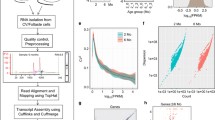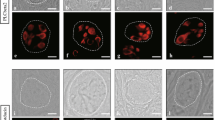Abstract
Aromatic l-amino acid decarboxylase (AADC) catalyses the decarboxylation of all aromatic l-amino acids. In mammals, AADC is expressed in many tissues besides the nervous system, and is associated with additional regulatory roles of dopamine and serotonin in a wide range of tissues. We examined the expression of AADC by using reverse transcription-polymerase chain reaction (RT-PCR) and immunohistochemistry. RT-PCR analysis showed that mRNA of AADC was detected in the taste bud-containing epithelium of the circumvallate papilla of mice. By immunohistochemical analyses, AADC was detected in a subset of taste bud cells of fungiform, foliate, and circumvallate papillae. Double-label studies showed that AADC colocalized with serotonin, NCAM, PLCβ2, and PGP9.5. On the other hand, AADC never colocalized with α-gustducin. Our results of double staining with AADC and taste cell markers indicate that only the type III cells could convert 5–hydroxytryptophan (5-HTP) to serotonin within taste buds. Taken together with previous studies, the properties of the type III cell of taste buds exactly fit into the APUD (amine and amine precursor uptake and decarboxylation) cell scheme. Furthermore, in the developing circumvallate papilla, AADC are first detected in a small number of papillary epithelial cells at E14.5. By E18.5, AADC-positive epithelial cells also express PGP9.5, which is one of marker of taste cells, and these cells have been contacted by developing nerve fibers. These results suggest that AADC expression begins at early stages of taste bud cell differentiation, and biogenic amines may act on taste bud differentiation of tongue epithelial cells, and further may regulate innervation of taste bud progenitor cells.






Similar content being viewed by others
References
Bertoldi M, Voltattorni CB (2003) Reaction and substrate specificity of recombinant pig kidney DOPA decarboxylase under aerobic and anaerobic conditions. Biochim Biophys Acta 1647:42–47
Buznikov GA, Lambert HW, Lauder JM (2001) Serotonin and serotonin-like substances as regulators of early embryogenesis and morphogenesis. Cell Tissue Res 305:177–186
Choi DS, Ward SJ, Messaddeq N, Launay JM, Maroteaux L (1997) 5-HT2B receptor-mediated serotonin morphogenetic function in mouse cranial neural crest and myocardial cells. Development 124:1745–1755
Clapp TR, Stone LM, Margolskee RF, Kinnamon SC (2001) Immunocytochemical evidence for co-expression of type III IP3 receptor with signaling components of bitter taste transduction. BMC Neurosci 2:6
Ewald DA, Roper S (1994) Bidirectional synaptic transmission in Necturus taste buds. J Neurosci 14:3791–3801
Facer P, Polak JM, Jaffe BM, Pearse AGE (1979) Immunocytochemical demonstration of 5-hydroxytryptamine in gastrointestinal endocrine cells. Histochem J 11:117–121
Fujita T, Kanno T, Kobayashi S (1988) The paraneuron. Springer, Tokyo
Herness S, Chen Y (1997) Serotonin inhibits calcium-activated K+ current in rat taste receptor cells. Neuroreport 8:3257–3261
Herness S, Chen Y (2000) Serotonergic agonists inhibit calcium-activated potassium and voltage-dependent sodium currents in rat taste receptor cells. J Membr Biol 173:27–138
Huang YJ, Maruyama Y, Lu KS, Pereira E, Plonsky I, Baur JE, Wu D, Roper SD (2005a) Mouse taste buds use serotonin as a neurotransmitter, J Neurosci 25:843–847
Huang YJ, Maruyama Y, Lu KS, Pereira E, Plonsky I, Baur JE, Wu D, Roper SD (2005b) Using biosensors to direct the release of serotonin from taste buds during taste stimulation. Arch Ital Biol 143:87–96
Kaya N, Shen T, Lu SG, Zhao FL, Herness S (2004) A paracrine signaling role for serotonin in rat taste buds: expression and localization of serotonin receptor subtypes. Am J Physiol Regul Integr Comp Physiol 286:R649–R658
Lauder JM (1993) Neurotransmitters as growth regulatory signals: role of receptors and second messengers. Trends Neurosci 16:233–240
Lauweryns JM, Van Ranst L (1988) Immunocytochemical localization of aromatic l-amino acid decarboxylase in human, rat, and mouse bronchopulmonary and gastrointestinal endocrine cells. J Histochem Cytochem 36:1181–1186
Lauweryns JM, de Bock V, Verhofstad AAJ, Steinbusch HWM (1982) Immunohistochemical localization of serotonin in intrapulmonary neuroepithelial bodies. Cell Tissue Res 226:215–223
Lawton DM, Furness DN, Lindemann B, Hackney CM (2000) Localization of the glutamate-asparate transporter, GLAST, in rat taste buds. Eur J Neurosci 12:3163–3171
Lindemann B (1996) Taste reception. Physiol Rev 76:719–766
Mbiene J-P, Roberts JD (2003) Distribution of keratin 8-containing cell clusters in mouse embryonic tongue: evidence for a prepattern for taste bud development. J Comp Neurol 457:111–122
Moiseiwitsh JRD (2000) The role of serotonin and neurotransmitters during craniofacial development. Crit Rev Oral Biol Med 11:230–239
Moiseiwitsh JRD, Lauder JM (1995) Serotonin regulates mouse cranial neural crest migration. Proc Natl Acad Sci USA 92:7182–7186
Moiseiwitsh JRD, Lauder JM (1997) Regulation of gene expression in cultured embryonic mouse mandibular mesenchyme by serotonin antagonists. Anat Embryol 195:71–78
Moiseiwitsh JRD, Raymond JR, Tamir H, Lauder JM (1998) Regulation by serotonin of tooth-germ morphogenesis and gene expression in mouse mandibular explant cultures. Arch Oral Biol 43:789–800
Murray RG (1986) The mammalian taste bud type III cell: a critical analysis. J Ultrastruct Mol Struct Res 95:175–188
Nada O, Hirata K (1975) The occurrence of the cell type containing a specific monoamine in the taste bud of the rabbit’s foliate papilla. Histochemistry 43:237–240
Nagatsu T (1991) Genes for human catecholamine-synthesizing enzymes. Neurosci Res 12:314–345
Palen K, Thorneby L, Emanuelsson H (1979) Effect of serotonin and serotonin antagonist on chick embryogenesis. Rouxs Arch Dev Biol 187:89–103
Pearse AG (1969) The cytochemistry and ultrastructure of polypeptide hormon-producing cells of APUD series and the embryologic, physiologic and pathologic implications of the concept. J Histochem Cytochem 17:303–313
Pearse AG (1986) The diffuse neuroendocrine system: peptides, amines, placodes and the APUD theory. Prog Brain Res 68:25–31
Rahman MK, Nagatsu T, Kato T (1981) Aromatic l-amino acid decarboxylase activity in central and peripheral tissues and serum of rats with l-DOPA and l-5-hydroxytryptophan as substrates. Biochem Pharmacol 30:645–649
Seta Y, Toyoshima K (1995) Three-dimensional structure of the gustatory cell in the mouse fungiform taste buds: a computer-assisted reconstruction from serial ultrathin sections. Anat Embryol 191:83–88
Seta Y, Seta C, Barlow LA (2003) Notch-associated gene expression in embryonic and adult taste papillae and taste buds suggests a role in taste cell lineage decisions. J Comp Neurol 464:49–61
Sundler F, Hakanson R, Loren I, Lundquist I (1980) Amine storage and function in peptide hormon-producing cells. Invest Cell Pathol 3:87–103
Takeda M, Kitao K (1980) Effect of monoamines on the taste buds in the mouse. Cell Tissue Res 210:71–78
Takeda M, Suzuki Y, Obara N, Nagai Y (1992) Neural cell adhesion molecule of taste buds. J Electron Microsc 41:375–380
Wingren U, Enerbäck L, Ahlman L, Allenmark S, Dahlström A (1983) Amines of the mucosal mast cell of the gut in normal and infected rats. Histochemistry 77:145–158
Yang R, Tabata S, Crowley HH, Margolskee RF, Kinnamon JC (2000) Ultrastructural localization of gustducin immunoreactivity in microvilli of type II taste cells in the rat. J Comp Neurol 425:139–151
Yang R, Stoick CL, Kinnamon JC (2004) Synaptobrevin-2-like immunoreactivity is associated with vesicles at synapses in rat circumvallate taste buds. J Comp Neurol 471:59–71
Yee CL, Yang R, Bottger B, Finger TE, Kinnamon JC (2001) “Type III” cells of rat taste buds: immunohistochemical and ultrastructural studies of neuron-specific enolase, protein gene product 9.5, and serotonin. J Comp Neurol 440:97–108
Yee CL, Jones KR, Finger TE (2003) Brain-derived neurotrophic factor is present in adult mouse taste cells with synapses. J Comp Neurol 459:15–24
Acknowledgments
We thank Dr. Linda Barlow for comments on earlier drafts of this study. This study was supported by the Japan Society for the Promotion Grant-in-Aid for Scientific Research number 16791111 to Y.S.
Author information
Authors and Affiliations
Corresponding author
Rights and permissions
About this article
Cite this article
Seta, Y., Kataoka, S., Toyono, T. et al. Immunohistochemical localization of aromatic l-amino acid decarboxylase in mouse taste buds and developing taste papillae. Histochem Cell Biol 127, 415–422 (2007). https://doi.org/10.1007/s00418-006-0257-3
Accepted:
Published:
Issue Date:
DOI: https://doi.org/10.1007/s00418-006-0257-3




